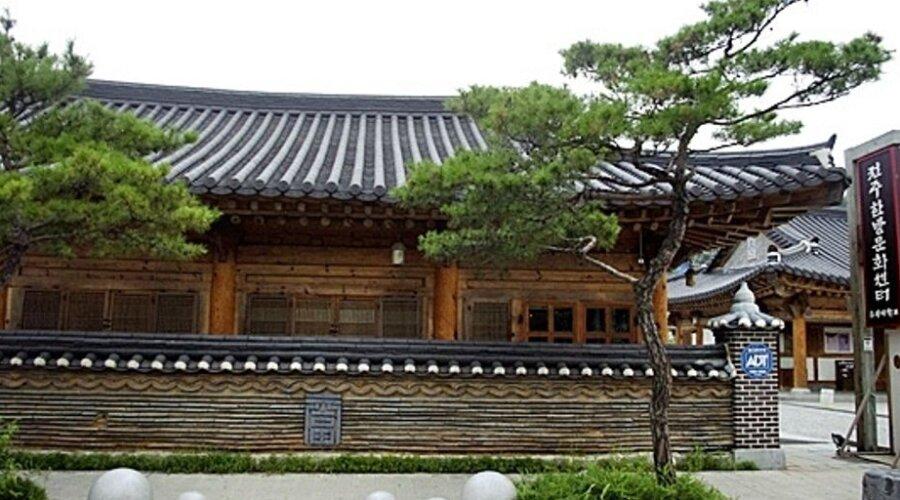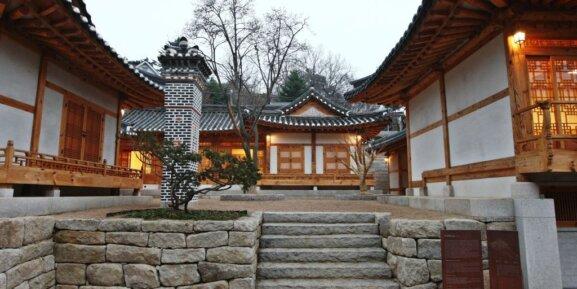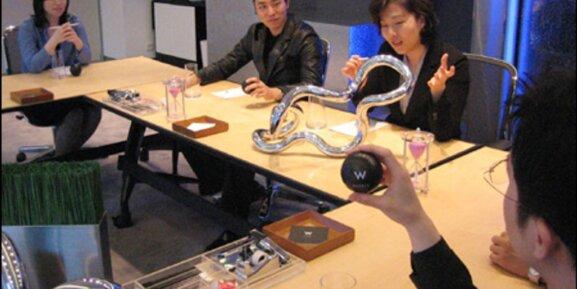“Historic Hideaways: Immersing Yourself in South Korea’s Rich Past”
South Korea, a country where the ancient and modern worlds beautifully intertwine, offers a unique opportunity to immerse yourself in its rich cultural past. From donning traditional Hanbok attire to wandering through historic villages and streets, every corner of South Korea has a story to tell. This article explores some of the best ways to experience South Korea’s history firsthand, including visits to iconic palaces, serene temples, and vibrant cultural hubs.
Key Takeaways
- Participate in a Hanbok-wearing experience to connect with South Korea’s traditional dress.
- Explore Bukchon Hanok Village to see traditional Korean houses and learn about Hanok architecture.
- Visit Insadong Antique Street for a mix of galleries, traditional restaurants, and teahouses.
- Enjoy a relaxing Han River Cruise to take in scenic views and onboard dining.
- Discover historic sites in Seoul and Busan, including Gyeongbokgung Palace and Haedong Yonggungsa Temple.
Step Back in Time with Hanbok Experiences

Where to Rent Hanboks
You can take part in a Hanbok-wearing experience, the traditional dress of South Korea. There are several places in Seoul where you can rent these beautiful garments. One of the most popular spots is near Gyeongbokgung Palace, where you can find numerous rental shops offering a variety of hanboks in different styles and colors. Prices typically range from $10 to $30 for a couple of hours, and many shops provide accessories like hairpins and bags to complete your look.
Best Spots for Hanbok Photos
Once you’re dressed in your hanbok, you’ll want to capture the moment. Some of the best spots for photos include the Bukchon Hanok Village, with its traditional Korean houses known as hanoks, and the beautiful Gyeongbokgung Palace. These locations offer a stunning backdrop that will make your photos look like they’ve stepped out of a history book.
Cultural Significance of Hanboks
Hanboks are not just beautiful garments; they hold a deep cultural significance in South Korea. Traditionally worn during festivals and celebrations, hanboks symbolize the rich cultural past of the country. The design and colors of a hanbok can indicate the wearer’s social status, age, and marital status. Wearing a hanbok allows you to step back in time and experience a piece of Korean heritage firsthand.
Stepping into a hanbok is like stepping into a different era, offering a unique way to immerse yourself in South Korea’s rich cultural history.
Exploring Bukchon Hanok Village

History of Hanok Architecture
Bukchon Hanok Village is a living museum showcasing traditional Korean houses, known as hanoks. These homes, with their elegant curved roofs and wooden beams, offer a glimpse into Korea’s architectural past. The village’s layout and design are close to nature, reflecting the ancient Korean philosophy of living harmoniously with the environment.
Must-Visit Hanoks
When wandering through Bukchon, there are several hanoks you shouldn’t miss:
- Gahoe-dong Hanok: Known for its beautiful garden and traditional tea ceremonies.
- Baek In-je House: A well-preserved hanok that offers guided tours.
- Bukchon Cultural Center: Provides workshops on traditional crafts and hanbok-wearing experiences.
Local Crafts and Souvenirs
Bukchon is not just about architecture; it’s also a hub for local crafts. You can find artisans creating beautiful pottery, handmade paper, and traditional masks. Don’t forget to pick up some unique souvenirs to remember your visit. Many shops offer work exchange programs, allowing you to learn a craft while helping out in the store.
Bukchon Hanok Village is a perfect blend of history and culture, offering visitors a chance to step back in time while enjoying the vibrant local community.
Wander Through Insadong Antique Street

Top Antique Shops
Insadong Antique Street is a treasure trove for antique lovers. The alleys are full of galleries and shops where you can find everything from traditional Korean pottery to vintage furniture. If you’re a collector or just love unique finds, this is the place to be. Don’t miss out on the weekend flea markets where you can haggle for the best prices.
Traditional Teahouses
After a long day of shopping, take a break in one of Insadong’s traditional teahouses. These cozy spots offer a variety of Korean teas and traditional snacks. It’s the perfect way to relax and soak in the atmosphere. Some teahouses even offer cultural events like calligraphy classes and traditional music performances.
Art Galleries and Studios
Insadong is not just about antiques; it’s also a hub for contemporary art. The area is dotted with art galleries and studios showcasing the work of local artists. Whether you’re into paintings, sculptures, or mixed media, you’ll find something that catches your eye. Many galleries also host special exhibitions and workshops, making it a vibrant part of Seoul’s cultural scene.
Relax on a Han River Cruise

Best Time for a Cruise
The best time to enjoy a Han River cruise is during the spring and autumn months when the weather is mild and the scenery is breathtaking. Evenings are particularly magical, with the city lights reflecting off the water, creating a romantic atmosphere.
Scenic Views Along the River
On the Han River (Hangang) cruise, you’ll be treated to stunning views of Seoul’s landmarks such as N Seoul Tower and Banpo Bridge. The cruise offers a unique perspective of the city, allowing you to see Seoul from a different angle.
Onboard Dining Options
Many Han River cruises offer onboard dining options, ranging from simple snacks to full-course meals. You can enjoy a delicious dinner while taking in the beautiful views of the city. Some cruises even feature live music and performances, making the experience even more memorable.
Discovering Seoul’s Historic Sites

Seoul is a city where the past and present coexist beautifully. Exploring its historic sites offers a glimpse into the rich tapestry of Korean history and culture. From grand palaces to serene shrines, there’s so much to see and learn.
Gyeongbokgung Palace
Gyeongbokgung Palace is one of the most beautiful and largest of the five palaces in Seoul. Walking through its gates, you can almost feel the history come alive. The palace grounds are vast, with stunning architecture and meticulously maintained gardens.
Changdeokgung Palace
Changdeokgung Palace is another must-visit. Known for its secret garden, this palace offers a more intimate look at royal life. The garden is a tranquil escape from the bustling city, perfect for a leisurely stroll.
Jongmyo Shrine
Jongmyo Shrine is a place of deep cultural significance. It is dedicated to the memorial services for the deceased kings and queens of the Joseon Dynasty. The rituals performed here are recognized by UNESCO as a masterpiece of the oral and intangible heritage of humanity.
When visiting these historic sites, consider staying in one of the many Seoul guesthouses and hostels. They offer a unique and immersive experience, often located close to these cultural landmarks.
Cultural Immersion in Busan

Busan, South Korea’s second-largest city, offers a captivating blend of modernity and tradition. From vibrant cultural villages to serene temples and luxurious spas, there’s something for everyone.
Gamcheon Cultural Village
Explore the wonderful Gamcheon Cultural Village, a complex of colorful houses built in a staircase fashion on the foothills of the coastal mountains. Formerly the ‘slums’ of Busan, today the area is a myriad of thriving streets with fascinating art galleries and studios, cafés, and restaurants. The exteriors are vibrantly decorated with murals and sculptures created by the residents.
Haedong Yonggungsa Temple
This stunning seaside temple offers a fascinating look into the cultural past of Busan. Perched on the coast, it provides breathtaking views of the ocean and a serene atmosphere for reflection. The temple is adorned with ornate carvings and statues, making it a must-visit for anyone interested in South Korea’s spiritual heritage.
Centum City Spa Land
For some well-earned relaxation, head to Centum City Spa Land. This luxurious spa consists of 22 spas fed by two different all-natural springs. You can experience 13 distinctively themed Jjimjilbang and saunas, and an open-air foot spa. It’s the perfect place to unwind after a day of exploring.
If you’re looking for a unique way to experience Busan, consider a work exchange program at Kimchee Guesthouse Busan. Volunteers work 3 hours/day, 5 days/week, with opportunities to explore the city. Plus, you’ll get free accommodation in Busan downtown.
Conclusion
South Korea is a treasure trove of history, culture, and natural beauty just waiting to be explored. From the bustling streets of Seoul to the serene landscapes of Jeju Island, there’s something for everyone. Whether you’re donning a Hanbok in Bukchon Hanok Village, wandering through the galleries and teahouses of Insadong, or cruising along the Han River, each experience offers a unique glimpse into the rich tapestry of Korean life. So pack your bags and get ready to immerse yourself in the vibrant and dynamic world of South Korea. Trust us, it’s a journey you won’t forget!
Frequently Asked Questions
What is a Hanbok and why is it significant?
A Hanbok is a traditional Korean dress characterized by vibrant colors and simple lines without pockets. It holds cultural significance as it reflects the aesthetics and values of the Korean people, often worn during festivals, celebrations, and special occasions.
Where can I rent a Hanbok in South Korea?
You can rent Hanboks at various locations in South Korea, especially near historical sites and tourist attractions such as Gyeongbokgung Palace, Bukchon Hanok Village, and Insadong. Many rental shops offer a variety of designs and sizes.
What are the must-visit sites in Bukchon Hanok Village?
Must-visit sites in Bukchon Hanok Village include the Bukchon Traditional Culture Center, Gahoe Museum, and various picturesque hanoks (traditional Korean houses) that showcase the beauty of traditional Korean architecture.
What can I expect on a Han River Cruise?
On a Han River Cruise, you can expect scenic views of Seoul’s skyline, iconic landmarks such as the N Seoul Tower, and beautiful bridges. Some cruises also offer onboard dining options and entertainment, making for a relaxing and enjoyable experience.
What are the top historic sites to visit in Seoul?
Top historic sites to visit in Seoul include Gyeongbokgung Palace, Changdeokgung Palace, and Jongmyo Shrine. These sites offer a glimpse into Korea’s royal history and traditional architecture.
What cultural experiences can I have in Busan?
In Busan, you can explore the colorful Gamcheon Cultural Village, visit the seaside Haedong Yonggungsa Temple, and relax at Centum City Spa Land, which offers a variety of spa treatments and relaxation options.



